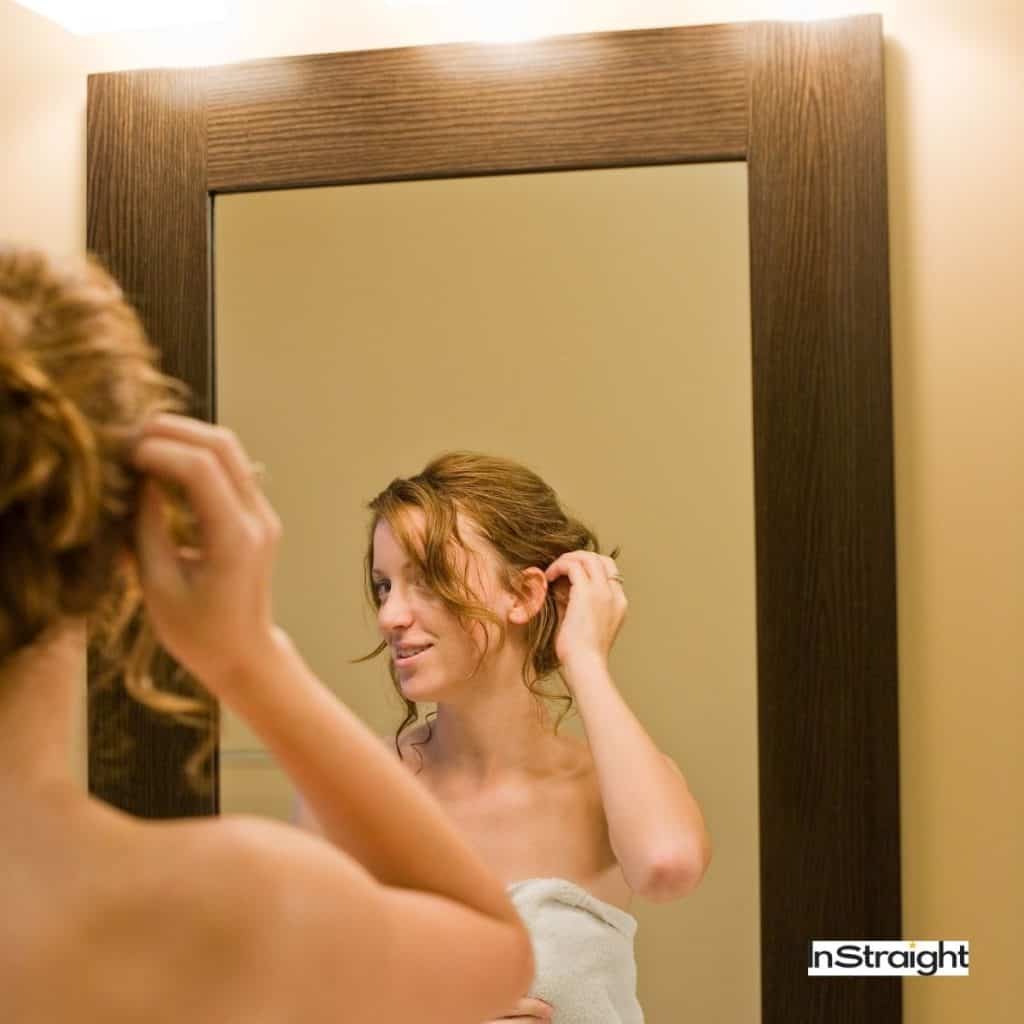
Welcome to my detailed guide on how to seal bathroom mirrors.
A bathroom mirror is constantly exposed to moisture and water, which exposes them to damage and lifting if you don’t use protective coatings.
That’s why I highly advise sealing your bathroom mirror edges using a quality bathroom mirror edge sealant, which will greatly prevent water from penetrating the underside mirror surface or the wood thus prolonging its life.
Let’s learn how to use it the right way!
How To Seal Bathroom Mirrors
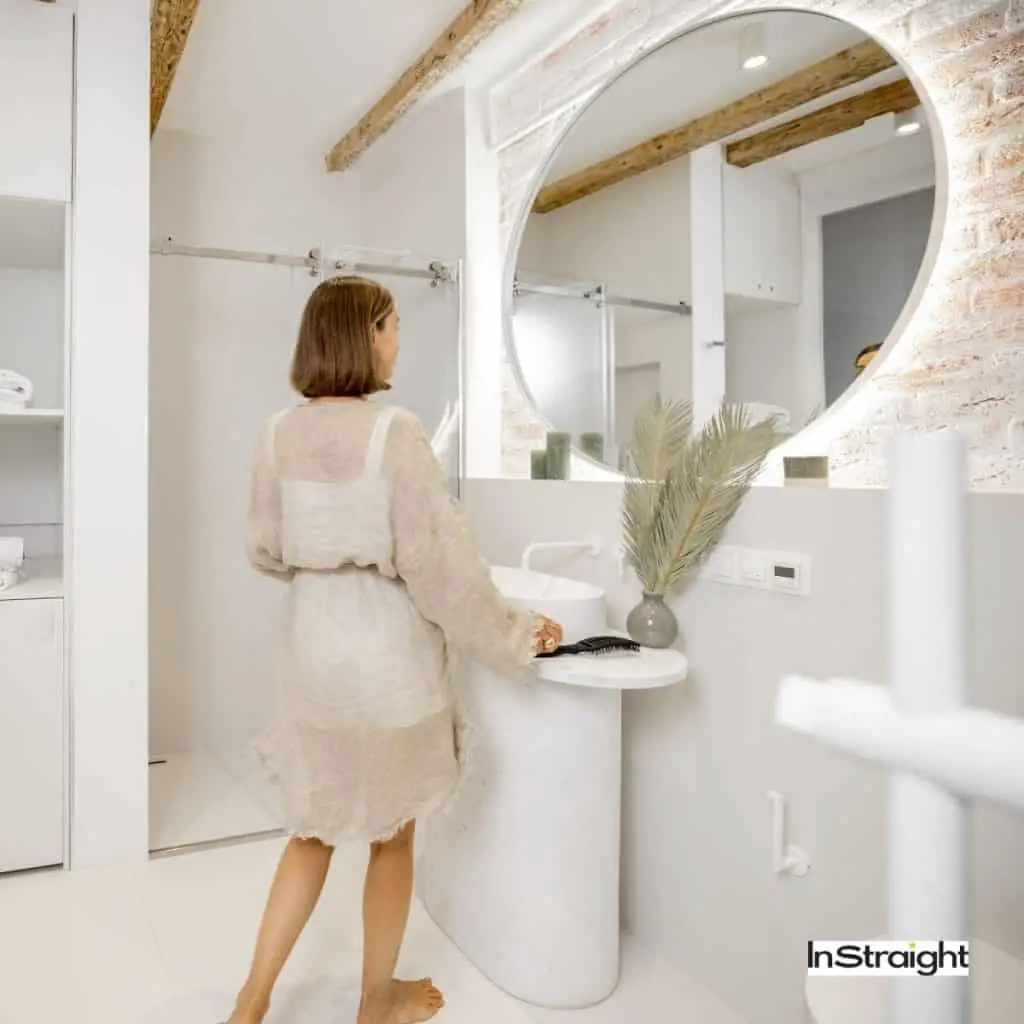
If you’re looking for ways to seal your bathroom mirrors, polyurethane and silicone are very handy [1,2].
I have been using them for a while now, and I rarely experience black edges or mirror rots due to moisture.
Below are all the requirements, as well as a step-by-step process.
Requirements
- Painter’s tape
- A sandpaper
- Paper towel
- Silicone caulking
- Polyutherene
Step 1
Taping around the mirror’s perimeter is the first step of sealing your vanity mirror. The tape ensures that both the glass and wall are protected from damage.
If your mirror is framed with wood, add more tape on the outer parts of the frame perimeter.
Step 2
Use polyurethane to seal the wood frame with the foam brush. But first, you should stir it using a paint stick probably a wooden one then dip its tip into the mirror edge sealant.
After that, quickly apply a layer of polyurethane to the wooden frame.
Ensure it’s thin to avoid being too sticky then cover the framed mirror surface. The first time I tried it, I used too much. And trust me, you don’t want to deal with the mess this sealant can create.
Give the layer some six hours to settle then apply a second coat depending on your personal preference.
Step 3
Remove the tape from the wall and around the mirror surface after you are sure that the polyurethane has completely dried.
Step 4
This step is meant to take care of any creases that might have formed between the wall and mirror frame. You do this by applying a thin layer of silicone caulking. Make sure your finger is wet as you smoothen the caulking applied on the seams.
You may be wondering why you need to use a clear caulking silicone. It is because it is water-resistant and therefore you can be sure that water won’t penetrate under the mirror and cause mirror rot.
After this, use a wet paper towel to get rid of any extra caulking.
Here’s one video that I found helpful when installing my mirror:
Related: How to Remove Bathroom Mirrors
How Do I Protect My Bathroom Mirror from Moisture?
If you want your bathroom mirror to last and continue to show off your beautiful reflection, you must make sure that it is protected from moisture damage by cleaning regularly, sealing, and ventilating the bathrooms.
Below is how exactly you can do that.
Mirror cleaning
A stained-glass mirror can be a major turn-off to a bathroom user. Mostly, it is caused by silver deterioration on the mirror surface. This is why you should ensure that your bathroom wall mirrors remain clean all the time.
The best way to go about mirror cleaning is by using a sponge, warm water, and a cleaning product that meets the safety standards.
As you do this, avoid spraying water on the mirror surface so that your fixture may not get drenched in water. This is why you should use a wet sponge and dry it with a dry and soft cloth.
This tutorial is helpful:
Dry The Mirror and The Bathroom
I realized that if you dry the mirror and the bathroom every time you use it, you prevent moisture from building up close to the mirror.
At first, it may be difficult to always remember, but once you make it a habit, you’ll be surprised at how effective it can be.
Mirror edges sealing
I have discussed how to seal your bathroom mirror above. Sealing prevents water from settling between the mirror to wall space and causing damage.
If you use a quality mirror edge sealant, you will successfully prevent the formation of a black edge on it. This is because the sealing minimizes its exposure to water especially when cleaning it.
Ventilation
Lack of or poor bathroom ventilation is another disastrous cause of moisture formation. This is more so if you use hot water to shower. When the moisture builds on the surface of the mirror it condenses and causes damage [3].
However, you can get rid of the moisture by ensuring that the bathroom windows are opened for moisture exit. In case your bathroom is small, you can use a ventilation fan.
READ MORE: How To Prevent Bathroom Mirrors from Rusting
Types of Bathroom Mirrors
If you haven’t fixed a mirror in your bathroom yet, it is important you know the type of mirror that will meet your needs. The market has several mirrors and here are some of them.
Mirrored medicine cabinets
You will find this type of mirror in most homes thanks to its functionality. Besides offering reflection services, it offers storage space, and that’s why it is common.
Frameless mirror
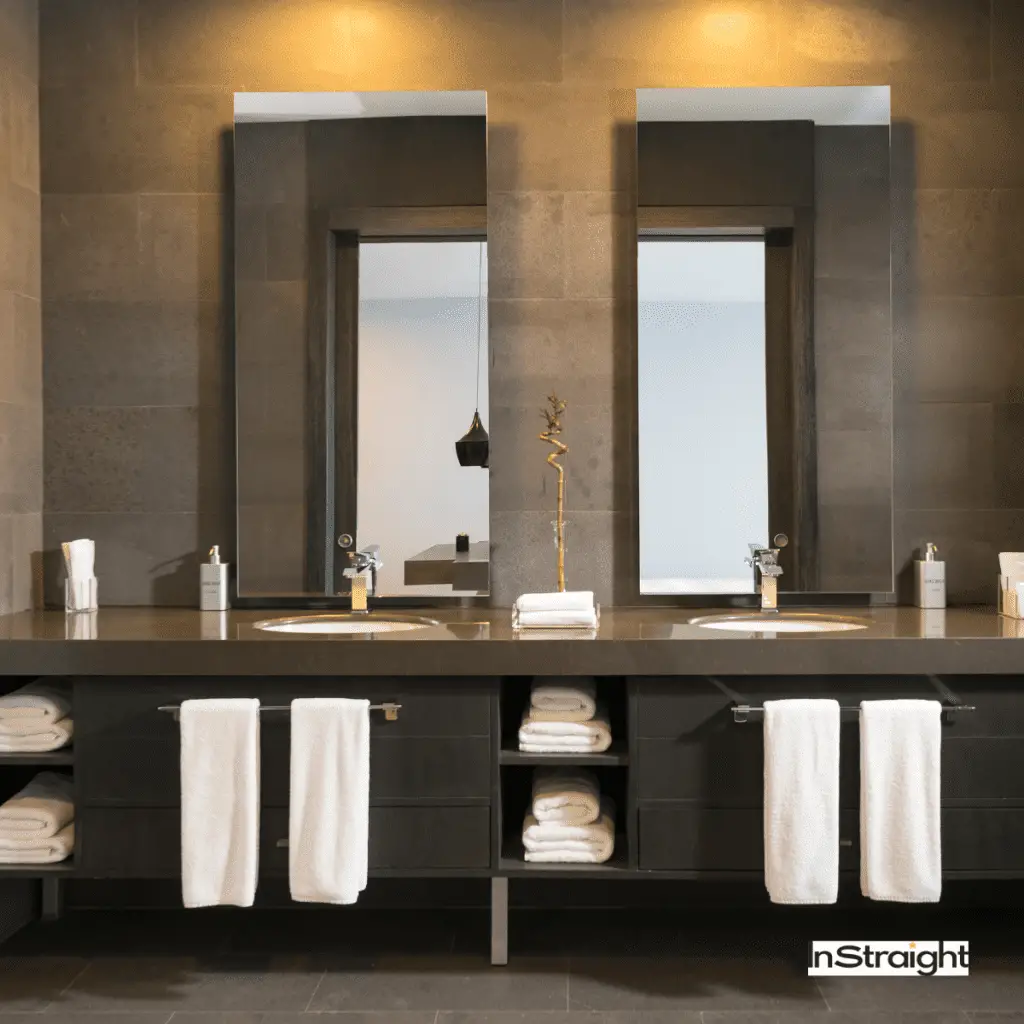
These are mirrors that have a buffed edge and when you look at them, they will appear like they are floating against the wall.
They can be cut to fit in your bathroom’s wall size and they are best used in contemporary bathrooms.
Framed bathroom mirror
This type of mirror hangs against the wall and it is also a common mirror. It is versatile and can fit into traditional or modern decor regardless of its size.
Decorative Mirrors
These are exclusive mirrors that have attractive frames and are meant to make your space luxurious and elegant. They are the best to go for if you don’t want the regular mirrors in your space.
Decorative mirrors come in different designs shapes, and sizes.
Vanity mirrors
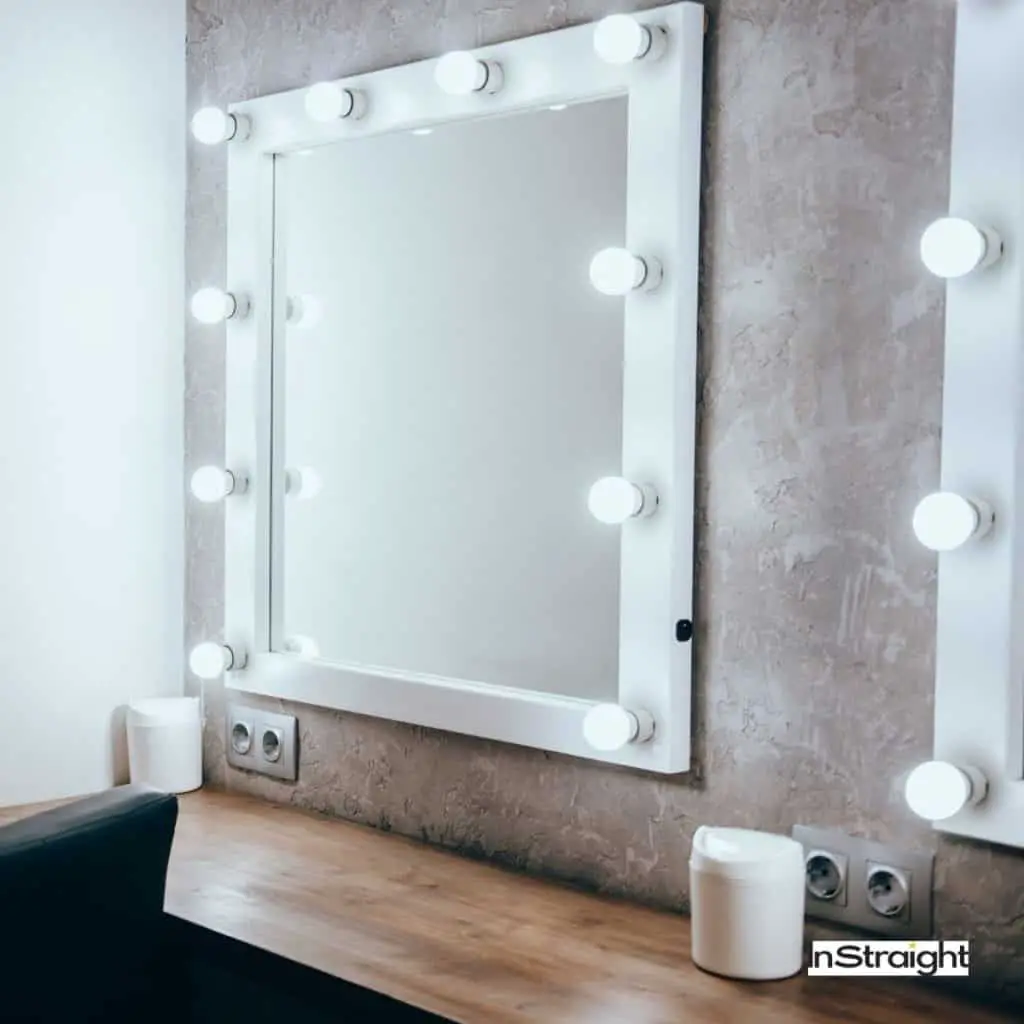
This is also known as a makeup mirror and it is mounted on a pedestal above the dresser. Most vanity mirrors are double-sided.
Check: No Nail Bathroom Mirror
FAQs
Should I Caulk Around A Bathroom Mirror?
Yes, you can. Caulking helps seal the mirror to prevent water and moisture from reaching into the mirror, causing damage.
Can I Do A Bathroom Mirror Frame Upgrade?
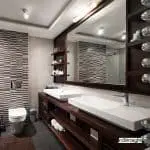
Yes, you can upgrade the frame provided you use the right framing wood and ensure the mirror edges are well sealed.
Why Use Silicone Caulking When Sealing Bathroom Edges?
Because it is easy to smoothen, it’s non-corrosive, it’s almost odorless, it works best for most types of walls, and it’s best suited for use on vertical walls.
Conclusion
You stand to gain a lot by sealing the edges of your bathroom mirror. You will prevent the edges from blackening and have the mirror serve you for long.
Also, sealing cuts down the maintenance cost of bathroom mirrors. This article has highlighted important steps of sealing your mirror.
Also, I have mentioned different ways of preventing moisture accumulation in your bathroom. This information will go a long way in ensuring that you enjoy the services of the mirror for long without worrying about damage.
References
- 1. Polyurethane Sealants [Internet]. Sika.com. 2021 [cited 2021 Dec 6]. Available from: https://usa.sika.com/en/construction/adhesives-sealants/joint-sealants/architectural-sealants/polyurethane.html
- 2. Silicone Sealant Handbook [Internet]. Hotmelt.com. 2021 [cited 2021 Dec 6]. Available from: https://www.hotmelt.com/blogs/blog/silicone-sealant-handbook
- 3. How to Fix Condensation in Bathrooms [Internet]. Home Guides | SF Gate. 2012 [cited 2021 Dec 6]. Available from: https://homeguides.sfgate.com/fix-condensation-bathrooms-43551.html
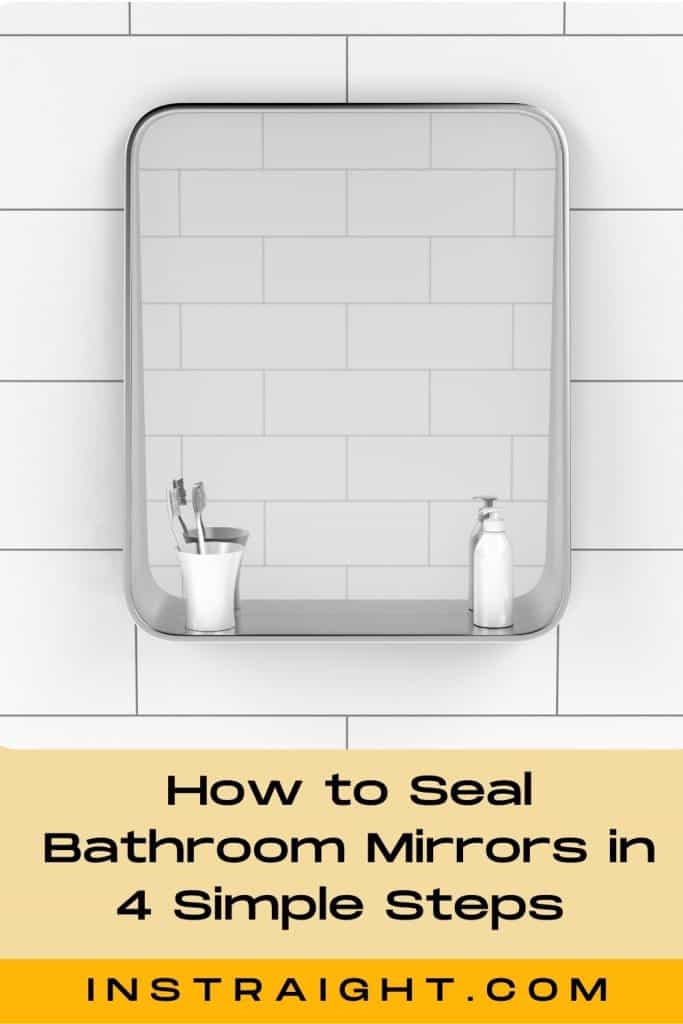
If you have more tips on how to seal bathroom mirrors, let us know in the comments below!
- About the Author
- Latest Posts
Martina is a graduated Doctor of Dental Medicine with a huge obsession for anything beauty-related. Her freelance writing started out as a creative outlet and turned out to be a full-time job. If you have any beauty questions, the chances are Martina has the answers. You can find more about her HERE. Follow her on LINKEDIN , INSTAGRAM
